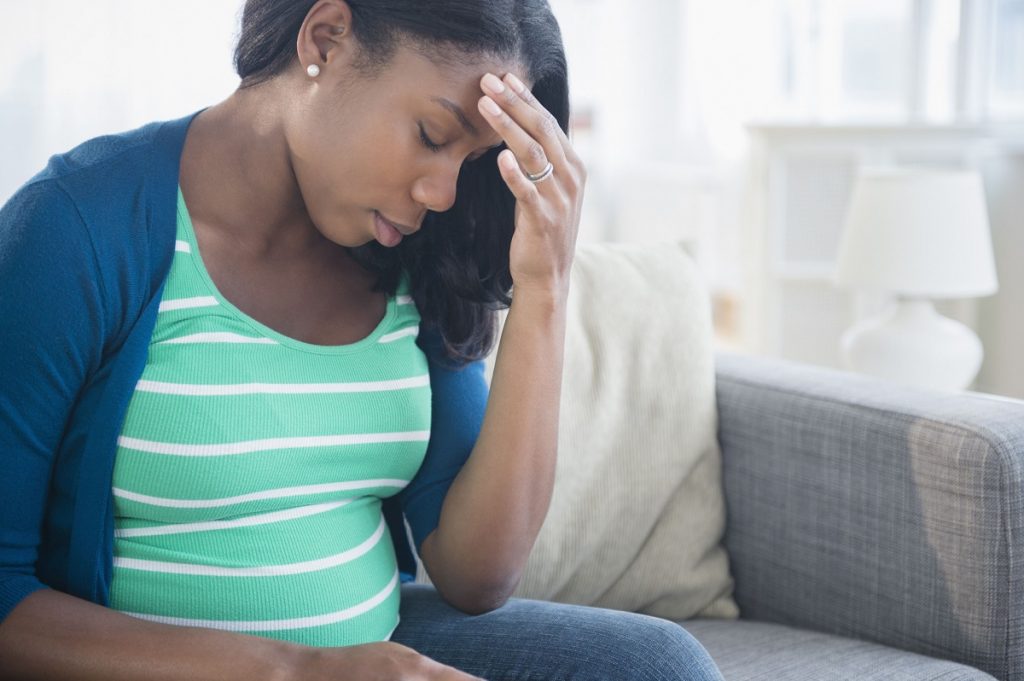Uterine Fibroid has become rampant among women nowadays in Nigeria and the world at large. A lot of people wonder if there is anything that can be done to slow or even prevent the growth of uterine fibroid.
Uterine fibroids can be defined as noncancerous tumors that grow in the muscle of the uterus. It may be smaller than an apple seed or grow to the size of a grapefruit or even bigger.

Photo credit: fibroidfree
What Causes Uterine Fibroids?
1. Drinking Alcohol
Taking too much alcohol, particularly beer can cause the development of uterine fibroids. So I advise women to reduce intake of alcohol, especially beer to avoid developing uterine fibroid.
2. Using Hair Relaxers
Most of the hair relaxers women use nowadays contain a chemical called phthalates, which is considered to be hormonally disruptive. Once there is a detectable amount of phthalates found in the urine, it can lead to the fibroid. so it is advisable not to use hair relaxers or using them frequently.
3. Going through Major Life Stresses
This one is synonymous with us in Nigeria because our daily life is filled with stress which ultimately affects our health.
Stressful major life events, such as the loss of a child or spouse, divorce are associated with fibroids because this stress leads to changes in our hormone levels that encourage the development of fibroids. So, my dear readers, you need to care for yourself by exercising, getting enough sleep, and eating right.
4. Having Less Than Two Children
Research has overtime shown that the more children a woman has, the less likely she is to develop fibroids, even though it is not clear why it appears so, it’s important to note that this does not mean women should have more children than they can carter for just to avoid having fibroids.
5. Early Menstruation
Fibroids are very sensitive to hormones, especially estrogen. This is why women who begin menstruating before the age of 11 are more likely to develop fibroids compared to those who begin menstruating after the age of 13 and the fact that one cannot dictate or change the age at which you started menstruating.
6. Exposure to Childhood Abuse
Being exposed to childhood abuse is tied to physical and mental health problems and studies have shown a connection to the development of uterine fibroids. So You need to take care of your physical and emotional health.
7. Not Eating Enough Fruit
If you’re not consistent with taking fruits and vegetables frequently, kindly do so because at least 2 servings of fruit a day, especially citrus fruits are associated with a lowered risk of uterine fibroids.
Photo Credit: USA fibroid centers
Symptoms of the uterine fibroid are:
Painful intercourse
Periods that are painful
Frequent urination
Bloated feeling in your pelvic region
Lower back pain
Heavy menstrual bleeding
Types of Fibroid
1. Intramural fibroids: These types of fibroids appear within the muscular wall of the uterus
2. Submucosal fibroids: This type of tumor develops in the middle muscle layer of the uterus
3.Subserosal fibroids: This type of fibroid grows on the outside of the uterus, which is called the serosa. They may grow large enough to make one's womb appear bigger on one side.
4. Pedunculated fibroids: The moment subserosal tumors develop a stem, a slender base that supports the tumor, it is called pedunculated fibroids.
So my dear readers, try as much as you can to take care of your health, eat right, and exercise regularly for a healthy lifestyle.


No comments:
Post a Comment